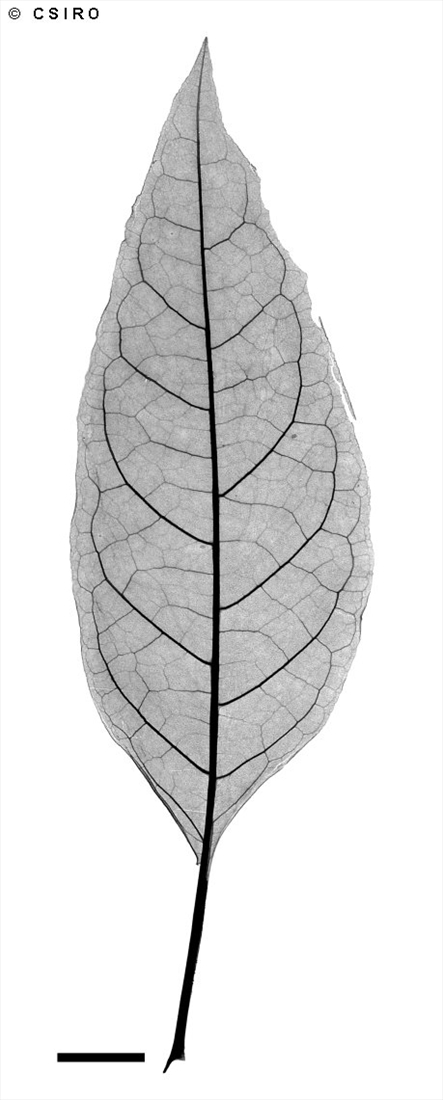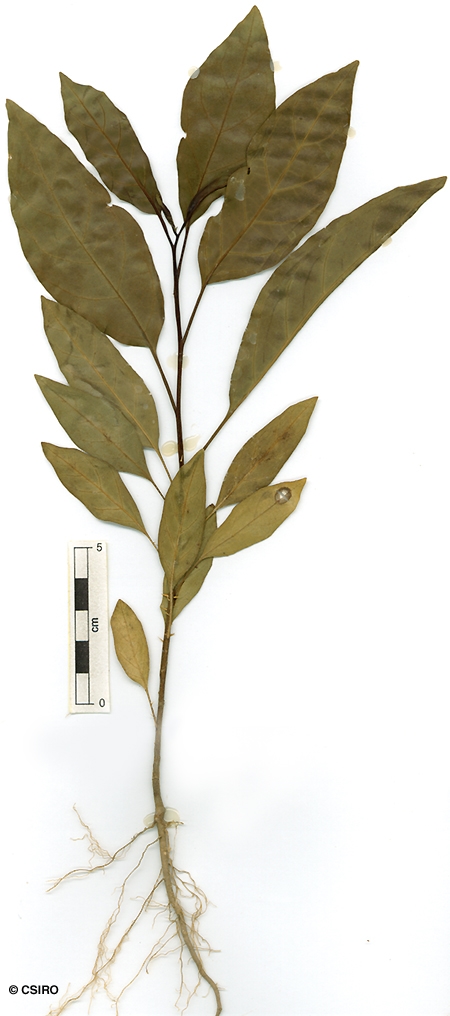Australian Tropical Rainforest Plants - Online edition
Solanum viridifolium Dunal






Dunal, M.F. in Candolle, A.L.P.P. de (1852) Prodromus 13(1): 73. Type: In Novae Hollandiae Nova Cambriae australi, circa promontorium Grafton (Banks).
Nightshade; Boolally
Does not grow beyond 30 cm dbh.
Leafy twigs green, about 1-2 mm diam., containing a large proportion of pith. Leaf blades about 6.5-17 x 2-7 cm, with about 5-10 main lateral veins on each side of the midrib, midrib raised on the upper surface. Leaves may appear to be in whorls of three, but in reality pairs of leaves are produced above scars from former twigs or inflorescences.
Inflorescence 10-50 flowered, pedicels about 10-15 mm long. Calyx glabrous, about 2-4 mm long, lobes 1-2 mm long. Corolla about 15 mm diam., 4-5-lobed, tube about 2 mm long, lobes about 6-7 mm long, usually with stellate hairs along the margins. Anthers about 4-5 mm long, filaments about 1 mm long. Ovary about 0.5-1 mm long with a few glandular hairs usually present, style about 5 mm long.
Calyx glabrous, persistent, but scarcely covering the base of the fruit. Fruits globular, about 7-10 mm diam. Seeds about 30-40 per fruit, flattened, about 2.5-3 mm diam, distinctly reticulate, margin thickened.
Cotyledons ovate or lanceolate, about 7-17 x 3-5.5 mm, petiole about 2-4 mm long, apex aristate, often hairy about the margin. First pair of leaves hairy on both the upper and lower surfaces. At the tenth leaf stage: leaf blade ovate or elliptic, apex acuminate, base cuneate, upper surface glabrous or with a few scattered stellate hairs, undersurface usually with a few scattered stellate hairs and prickles along the midrib; petiole and stem usually armed with long, straight spines. Seed germination time 11 to 67 days.
Fruit eaten by Fruit Pigeons. Cooper & Cooper (1994).





